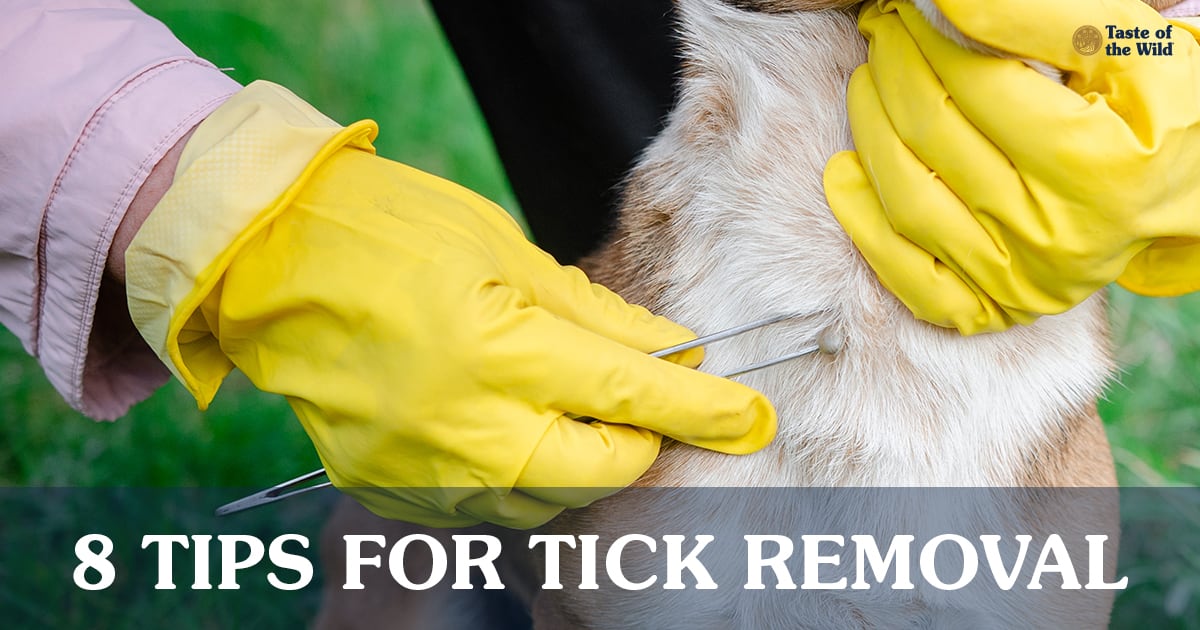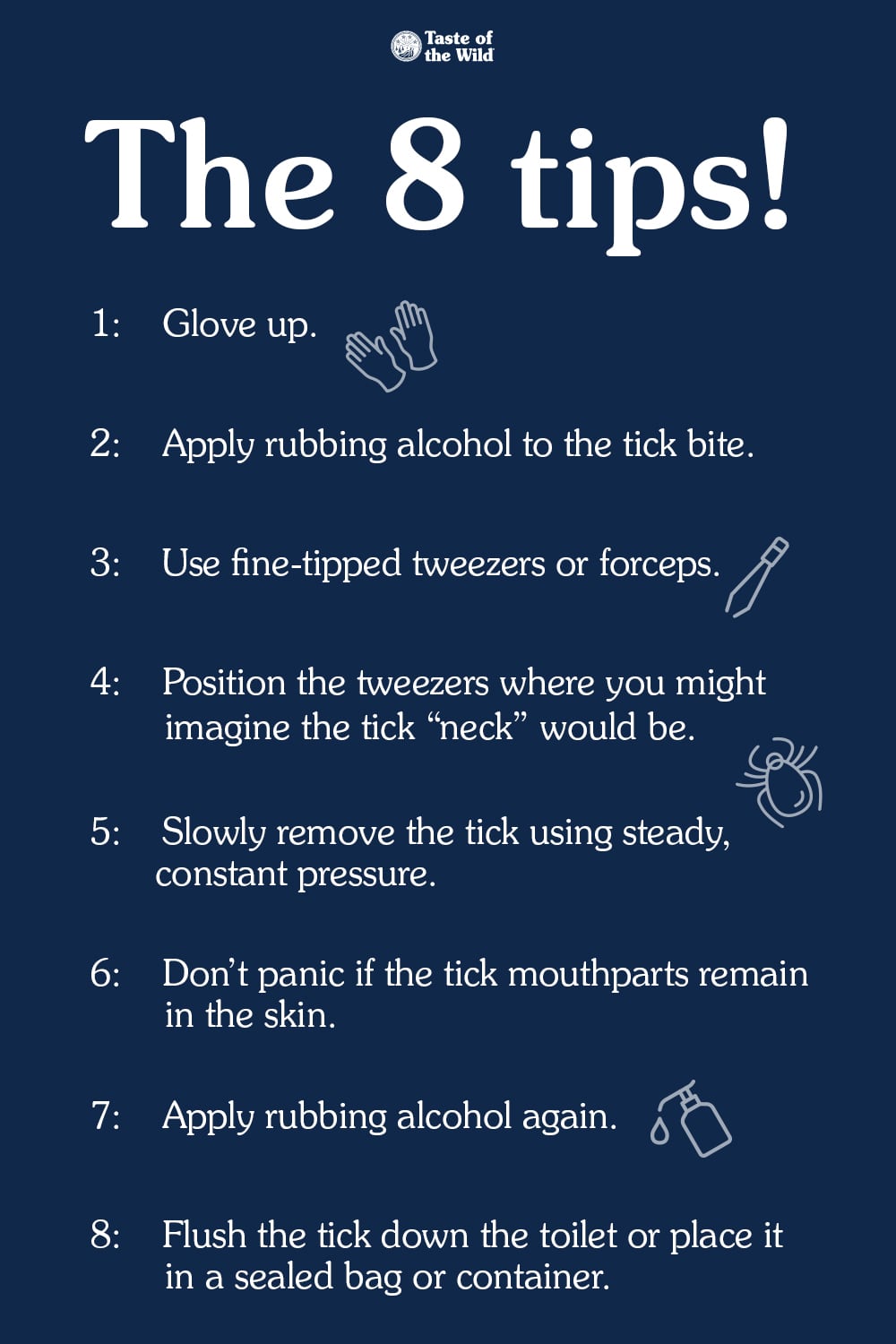
Only you know that special hollow, at the base of your dog’s neck, where you can scritch and send a hind paw banging on the floor, scratching at a phantom itch. But wait… what’s this? You part the hair. Eeewww, it’s a bloated tick.
If it’s an adult deer tick, it can latch on with a tenacity unmatched by most other ticks. First, the tick inserts its long mouthparts, which are barbed to firmly anchor it to the host. Then, the tick secretes a cement-like substance that bonds it to the skin until it’s satiated and ready to drop off.
Still, a deer tick must feed for 24 to 48 hours before it can transmit the organisms responsible for Lyme disease. Removing the tick as soon as you find it reduces your dog’s risk for Lyme or other tick-borne diseases. As part of Prevention of Lyme Disease in Dogs Month, we’re sharing the right — and not-so-right — ways to remove a tick.
Avoid these tick removal methods
There’s a lot of misinformation on the internet, including the following tick removal suggestions, which should be filed under “Bad ideas”:
- Pinch the tick between your thumb and forefinger and pull it out — Many (but not all) ticks are infected with pathogens, or disease-causing agents. Pressing on the tick body may actually force pathogens in the tick gut into your pet.
- Burn the tick with a lit match or lighter — Some claim applying heat to the tick body will make it back out of the skin. In reality, heat may cause the tick to regurgitate gut contents into the bite. And chances are good that you could burn your pet’s skin or hair.
- Suffocate the tick with petroleum jelly, fingernail polish, alcohol or essential oils. Ticks generally only breathe between 1 and 15 times an hour out of spiracles, or openings on the sides of their bodies. While the tick may back out to escape the irritating solution, it will probably disgorge gut contents into the pet first.
So how to you get the darn thing off?
Tick removal the right way
If your dog is covered with hundreds of ticks, call your veterinarian. He or she can recommend a fast-acting tick-killing product for the majority of ticks, and the remaining ticks can be removed manually.
If you’ve only found a few ticks on your dog, removing them is relatively easy:

Not all ticks carry disease-causing agents, but it’s a good idea to watch your dog for signs of tick-borne illnesses such as Lyme disease for a few weeks after tick removal. Signs of Lyme disease may include lethargy, loss of appetite and shifting-leg lameness. Your veterinarian can also recommend tick preventives to help kill ticks that come in contact with your dog.
RELATED POST: 9 Flea & Tick Do’s and Don’ts
The information in this blog has been developed with our veterinarian and is designed to help educate pet parents. If you have questions or concerns about your pet's health or nutrition, please talk with your veterinarian.
